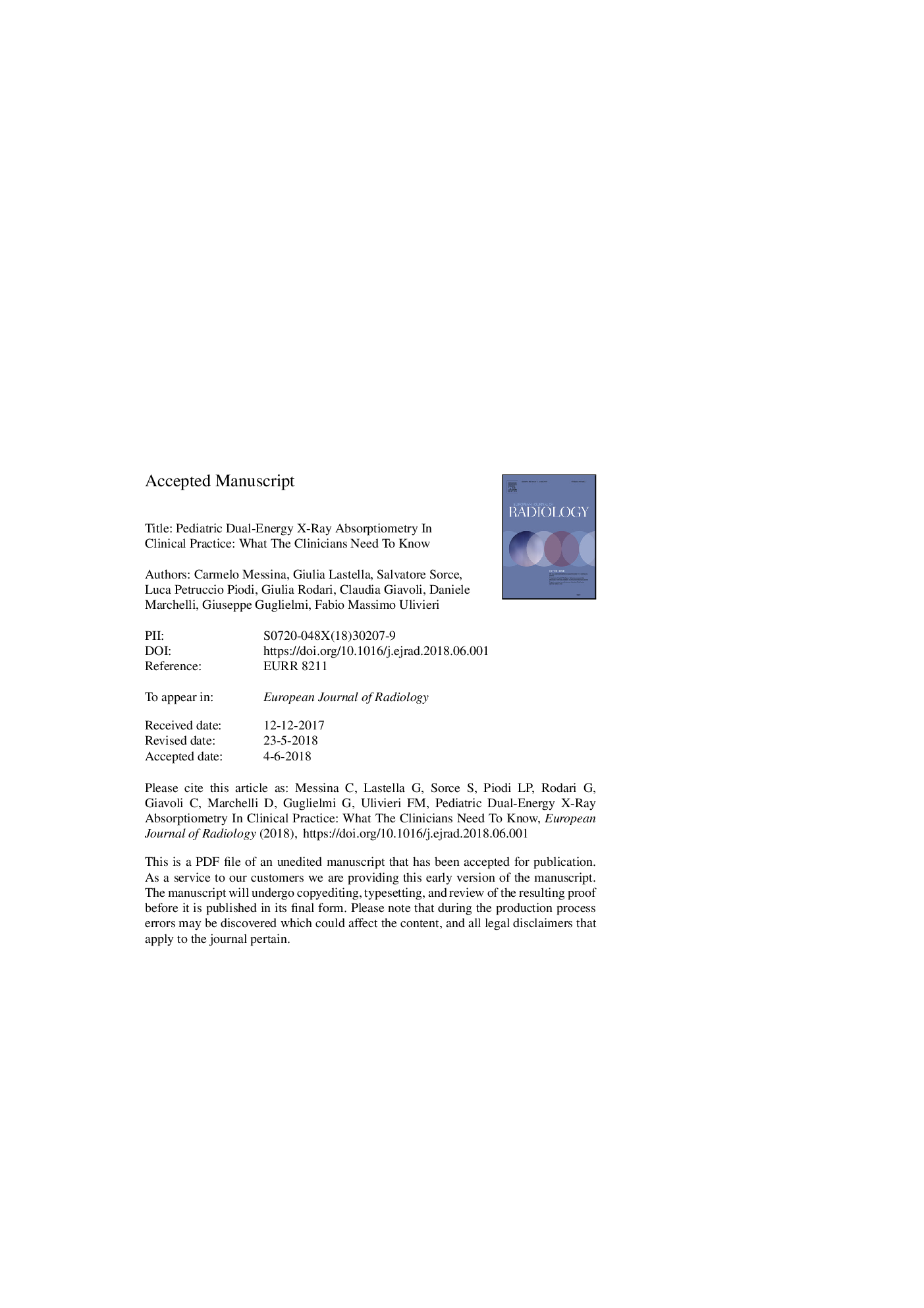| Article ID | Journal | Published Year | Pages | File Type |
|---|---|---|---|---|
| 8822567 | European Journal of Radiology | 2018 | 20 Pages |
Abstract
The importance of childhood and adolescence for bone development and mineral accrual is increasingly accepted, leading to a need of suitable methods for monitoring bone health even in pediatric setting. Among the several different imaging methods available for clinical measurement of bone mineral density (BMD) in children, dual-energy X-ray absorptiometry (DXA) is the most widely available and commonly used due to its reproducibility, negligible radiation dose and reliable pediatric reference data. Nevertheless, DXA in children has some technical specific features that should be known by those physicians who interpret and report this examination. We provide recommendations for optimal DXA scan reporting in pediatric setting, including indications, skeletal sites to be examined, parameters to be measured, timing of follow-up BMD measurements. Adequate report and analysis of DXA examinations are essential to prevent over- and underdiagnosis of bone mineral impairment in pediatric patients. In conclusion, a complete and exhaustive DXA report in children and adolescents is mandatory for an accurate diagnosis and a precise monitoring of pediatric bone status.
Related Topics
Health Sciences
Medicine and Dentistry
Radiology and Imaging
Authors
Carmelo Messina, Giulia Lastella, Salvatore Sorce, Luca Petruccio Piodi, Giulia Rodari, Claudia Giavoli, Daniele Marchelli, Giuseppe Guglielmi, Fabio Massimo Ulivieri,
